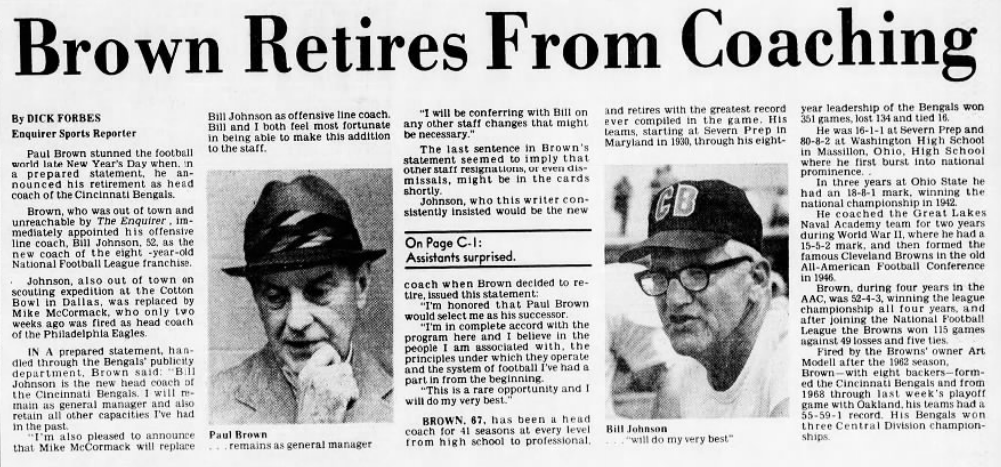Upon his retirement in 1976, iconic Bengals owner Paul Brown made a decision that would shape his team to the present day. The old-school Brown opted to hire Bill “Tiger” Johnson, over the up-and-coming offensive genius that was Bill Walsh, and while there were some similarities in successes and failures early on, Walsh went on to win three Super Bowls with the 49ers—two at the Bengals’ expense.
When you look at Walsh and what he did with Montana and what Wyche, his protege, created in Cincinnati, one is inclined to think he could have made Esiason into a quarterback placed on the position’s Mount Rushmore of iconic faces. It’s an easy pill to swallow, especially when looking at what Walsh did with Esiason’s predecessor, Ken Anderson.
When you read a recounting of the saga between Walsh and the Bengals, a theme of obsession with getting back at Paul Brown is apparent. If he had been given the original opportunity with the Bengals, would he have channeled that energy into making Esiason a championship quarterback? It’s definitely possible. After all, Montana was a lukewarm prospect out of Notre Dame in 1979 and Walsh molded him into one of the best quarterbacks of all time.
Walsh was given quite a bit of free reign when it came to signing players on the open market, something Walsh may not have been allowed to do with Cincinnati. A Brown family staple when it comes to running an NFL franchise is cautioning on the side of frugality when it comes to free agency signings.

When you look at Walsh and what he did with Montana and what Wyche, his protege, created in Cincinnati, one is inclined to think he could have made Esiason into a quarterback placed on the position’s Mount Rushmore of iconic faces. It’s an easy pill to swallow, especially when looking at what Walsh did with Esiason’s predecessor, Ken Anderson.
When you read a recounting of the saga between Walsh and the Bengals, a theme of obsession with getting back at Paul Brown is apparent. If he had been given the original opportunity with the Bengals, would he have channeled that energy into making Esiason a championship quarterback? It’s definitely possible. After all, Montana was a lukewarm prospect out of Notre Dame in 1979 and Walsh molded him into one of the best quarterbacks of all time.
Walsh was given quite a bit of free reign when it came to signing players on the open market, something Walsh may not have been allowed to do with Cincinnati. A Brown family staple when it comes to running an NFL franchise is cautioning on the side of frugality when it comes to free agency signings.

